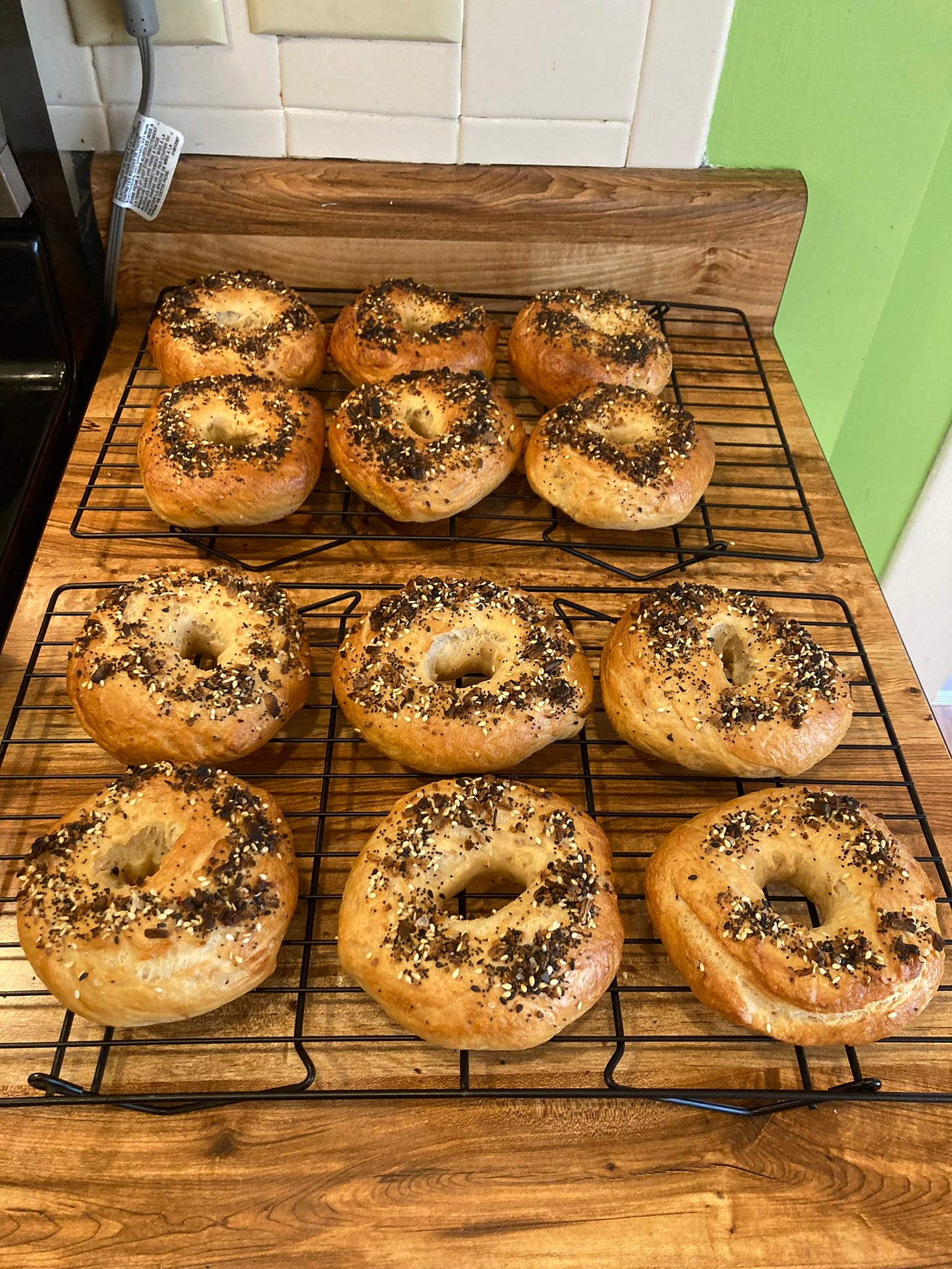Hey, subscribe below to become subscriber #404 (or, I don’t know—is that unlucky?). Or go buy my new book, Fair Game, about a girls’ basketball team that challenges the boys to a high stakes game. Either one would be awesome.
If you’re a baker, you might be familiar with the importance of weighing your flour. This is what all the experts will tell you. Sure, you can use that old measuring cup for your baking or just go by the feel of the dough, but if you’re serious about it, you should have a kitchen scale to precisely weigh the flour. Baking, after all, is a science. Flour is affected by humidity and temperature and how long it’s sat in a bag in the bottom of your pantry. Weighing is more accurate and will give you more consistent results. Serious bakers weigh their flour.
I’ve been baking for years and reading this admonition over and over again and, yet, I did not weigh my flour. I purchased a kitchen scale at some point, but it was so unreliable and difficult to use that I rarely brought it out. I used measuring cups and my sense of what the dough should feel like.
This year I started making my own bagels, which is just about the best life decision I have ever made. The recipe includes measures of weight, of course, but I measured the flour by volume, with my measuring cups and my general sense of how dough should look and feel. The bagels were absolutely fine, though there was some variance in the dough. Sometimes it was stickier and sometimes more dry. The deep perfectionist that lives inside me decided this slight discrepancy was unacceptable. I invested in a better kitchen scale and set about to weight my flour, like a real baker.
The first time I made the bagels with my new kitchen scale was a less than perfect experiment, but I had the sense pretty quickly that something was wrong. When I put the flour, water, salt and yeast into my stand mixer, the resulting dough was much, much stickier than any early versions. There was no way bagels were going to made with that. I added more dough until it became at least workable. We ran out of time for all the necessary turns before the overnight rise in the fridge, but I could tell as I shaped the bagels the next morning. The dough was wrong. The bagels ended up too flat, more bagel thin than actual bagel.
The next time with the kitchen scale, I got more systematic. I measured the flour with my cup into the bowl that sat on the scale so I could compare the two methods. The recipe calls for 5 ½ cups of flour or 660 grams. To get to 660 grams took less than 5 cups by my measurement. But I went with the weight instead of the volume even though, once again, the dough did not feel right to me. It felt less wrong, but still too light. Too airy. Once again, the bagels ended up flat. Edible, but disappointing.
A few nights later, my baker friend was over for drinks. She’s been baking much longer than I have and I trust her in all things culinary.
“Do you weigh your flour?” I asked her.
“No,” she said. “Never.”
“But--,” I started to explain.
“I know, but I go by feel,” she said. “I add the flour until the dough feels right.”
Of course.
I have no idea why weighing the flour did not work for me. As a person who thinks too much, I find myself wanting a concrete answer. I want to know why. But here’s the simple truth—I know when the dough feels right. I am a real baker. I don’t need a better kitchen scale, I just need to learn to trust myself.
As in baking, so in life. This week I hit 400 subscribers for this newsletter, a milestone of sorts. I started in August 2021 with 59 subscribers migrated from MailChimp. Four hundred subscribers is small fries on Substack or at least that’s how it feels.
Substack is, in the end, a company. Their purpose is to make money. Their model works best if there are a lot of people with a lot of subscribers, most of them paid. That model works well for a lot of people on here and good for them. There’s so much amazing writing happening on this platform it blows my mind.
It gets hard not to get caught up in one particular model for how to be on Substack. Grow, grow, grow! How to grow more! How to convert to paid! How to use Substack to become a NY Times bestseller! All of these things are lovely, but probably not going to happen for me. I don’t spend much time trying to convert people to paid subscriptions. I don’t provide a lot of content that’s behind a paywall. Partly because I haven’t figured out how I would do that and partly because it doesn’t feel great to me. I swore from the beginning that I would never send out a newsletter that cuts off in the middle behind a paywall. This is, of course, a very good way to get people to pay for your newsletter. But I also find it infuriating when I’m on the receiving end and so I just can’t bring myself to do it. It’s not wrong. It’s just not for me.
If I was serious about growing my Substack and making money here, I’d probably specialize. I’d find a niche. I’d develop a brand. But that doesn’t feel right, either. It’s not why I’m here. If I want to talk about baking one day and gender inequality in sports the next and the female grackle that hopped around me while I was in our backyard the other day, that’s what I’ll do. That’s who I am. I would get so bored writing about one topic all the time. There’s no reason to do that to myself. It sounds too much like work and that’s not what I’m doing here.

Early on, I read someone describing their Substack as their own personal writing lab. I liked that idea. Here’s a place to try things out. To let ideas unspool, sometimes in a way that might be a little chaotic. The newsletter may not be the same every time and that’s okay. I’m writing this for me. The rest of you are along for the ride. I hope it’s a pleasant and interesting one, but I’m still the one driving the car.
I’m so happy and grateful to have every single one of you 400 (well, 403 at the moment) lovely people. Mary Oliver said, “Pay attention. Be astonished. Tell about it.” You are the third part of that equation for me and that itself is astonishing. People who spend five minutes of their day reading my words. Thank you, thank you, thank you.
There are lots of people out there telling me how to make a better Substack, one that would probably have more than 400 subscribers. Weigh the flour. That’s the right way. But I know what the dough is supposed to feel like. I know what feels right and what doesn’t, even if sometimes I forget. I am a real writer and this is what it looks like. Thanks for being here with me.
Hey, if you have bought my book, Fair Game, and maybe even, I don’t know, read it, help a writer out and go give it a review on Amazon. Or on Barnes and Noble. Or on Goodreads. Or post a picture with your review on social media. Or tell someone about it who you think might be into it. Or ask your local library to order a copy. Thanks so much.







"If I want to talk about baking one day and gender inequality in sports the next and the female grackle that hopped around me while I was in our backyard the other day, that’s what I’ll do."
This is exactly why I like it here. ❤️
Thank you for this it’s so encouraging and I firmly agree with your sentiment. I too like writing what I feel like and even with my trying to theme each week so I have different topics each month I’m finding myself getting hemmed in. I think there’s something to be said for simply writing what is currently sparking an interest in you as it always resonates with at least someone! Keep up the fab work x